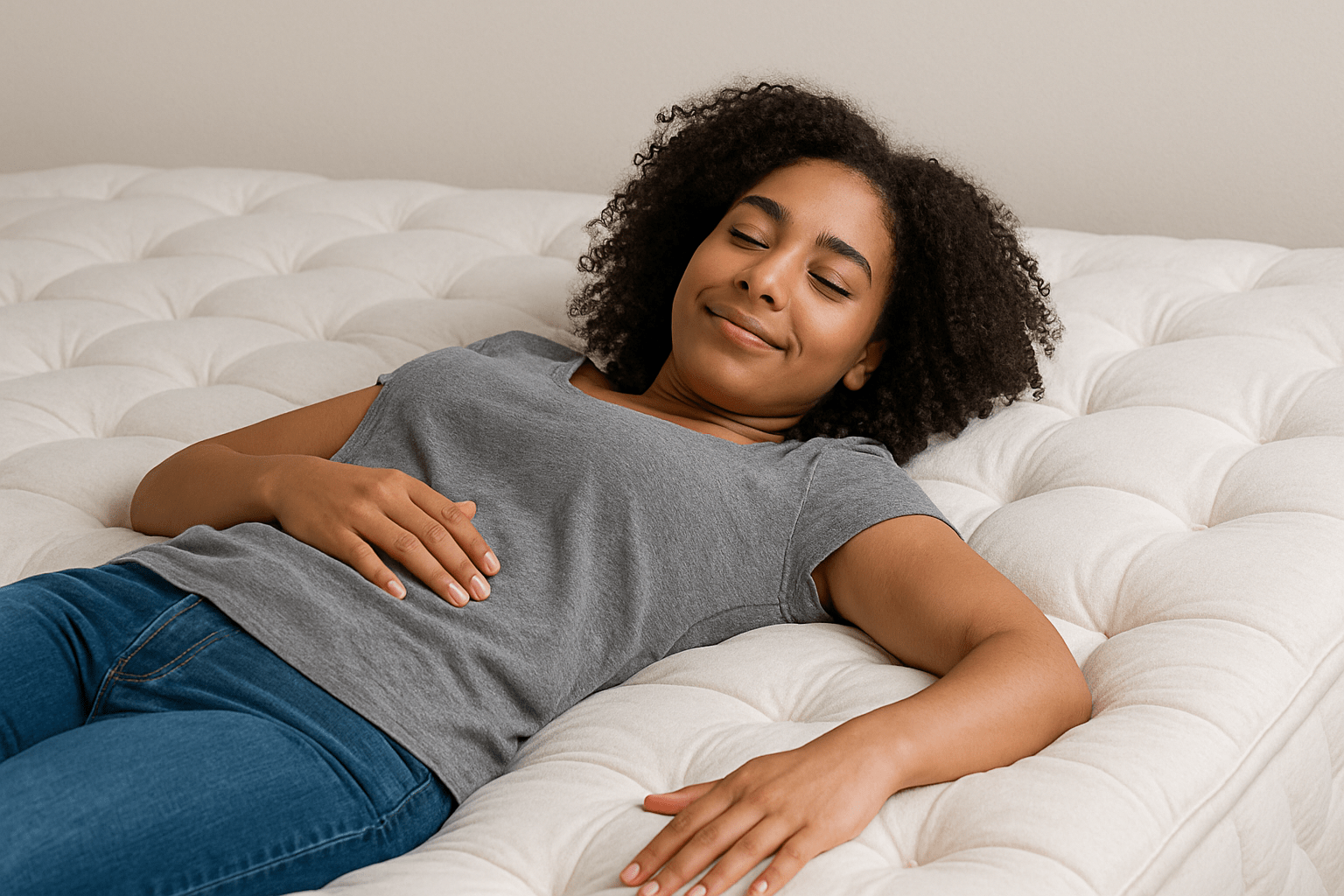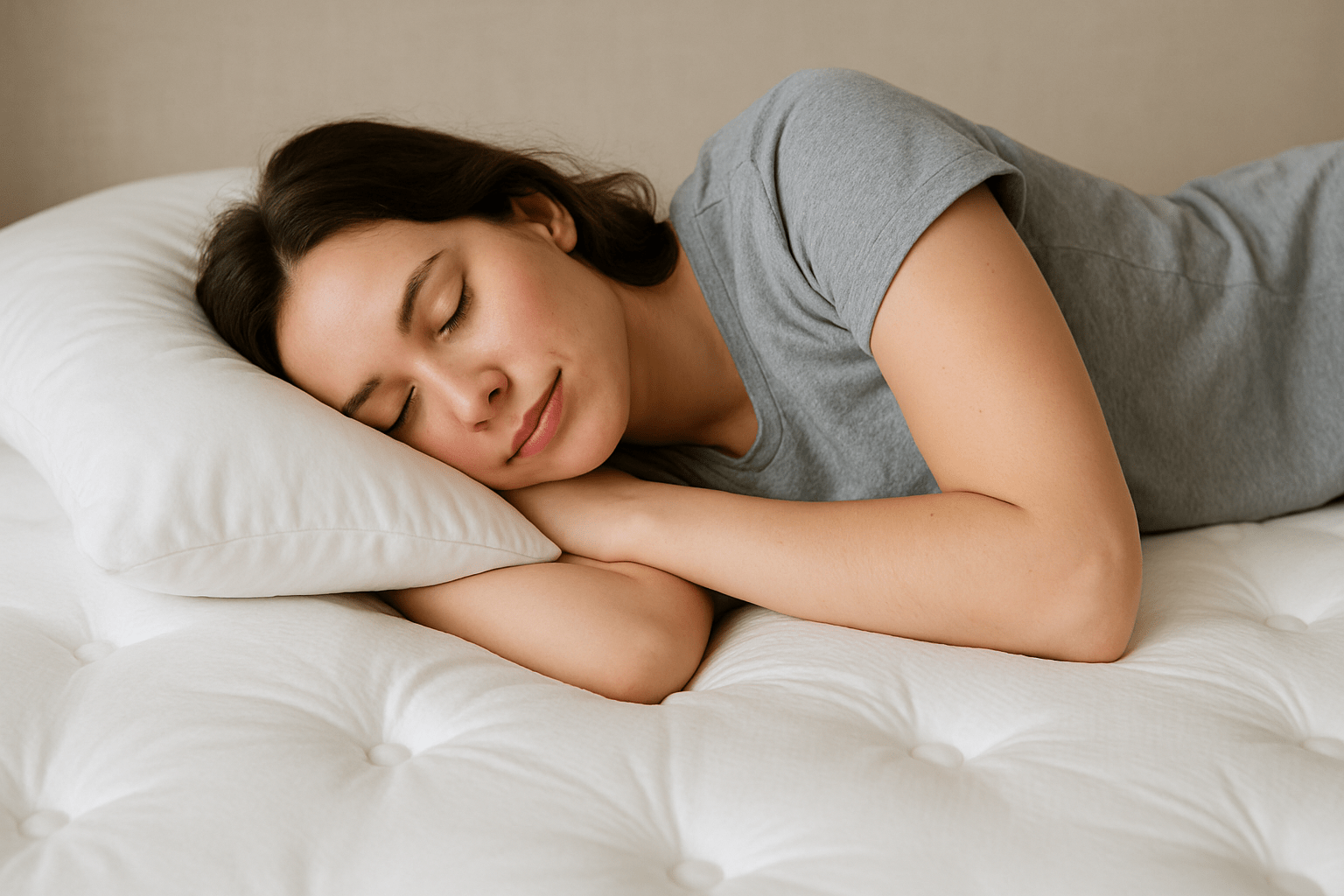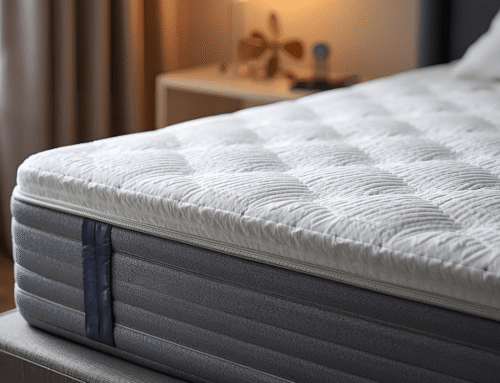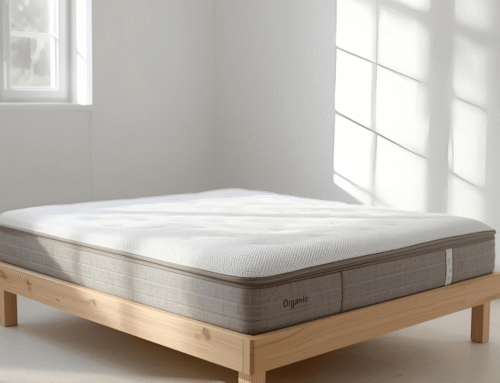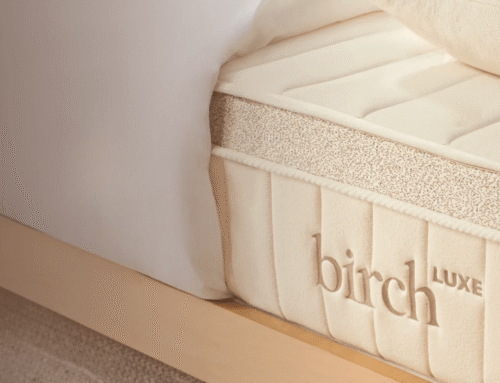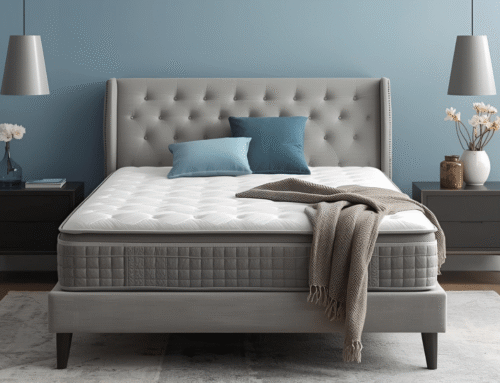Sleeping on an ultra plush mattress is like sleeping on a cloud — it’s soft, cushiony, and gives you that “sinking in” feeling. But is this dreamy softness right for you? Let’s break it down. In this post, we’ll explain what an ultra plush mattress is, its benefits, who should use it, and how it compares to other firmness levels. You’ll also learn how to shop smart and care for your ultra plush bed so it stays comfy for years.
Key Takeaways
- Ultra plush mattresses offer a cloud-like, deeply cushioned sleep experience.
- They’re ideal for side sleepers and people under 150 lbs needing pressure relief.
- Ultra plush models are softer than regular plush, but still support spinal alignment.
- The thick comfort layers cradle joints and minimize motion transfer.
- Poorly built ultra plush beds can sag and worsen back pain over time.
What Is an Ultra Plush Mattress?
An ultra plush mattress is one of the softest and most luxurious beds you can buy. A plush mattress is soft, with thick comfort layers made of memory foam, latex, or pillow tops that gently cradle your body. Many people wonder what plush mattress means in firmness — it usually rates about 2–3 out of 10 on the firmness scale, making it incredibly soft.
This plush and soft mattress lets you sink in deeply, providing a “hug-like” feel and excellent pressure relief. But don’t worry — even though it’s ultra soft, a plush mattress is designed with a supportive core that helps keep your spine aligned. Curious how firm a plush mattress is? It’s among the softest available, perfect for side sleepers. People also ask, is it good for back pain? It can be, especially if you’re a side sleeper needing extra cushioning for shoulders and hips.
What Does Ultra Plush Mattress Mean?
Is a plush mattress good for back pain? Well, the answer isn’t so simple because it really depends. Plush mattresses can actually help with back pain if they also have strong, supportive layers underneath that soft, cozy surface. The top layers are designed to cradle your body and relieve pressure points, especially around your hips and shoulders, which can help keep your spine aligned and happy.
However, softness alone isn’t enough. Choosing the right comfort level is key to making sure your mattress supports you properly without letting your spine droop. If a mattress is too soft and saggy, it could end up making your back pain even worse. You might also wonder about a plush mattress and pillow top, which is best for your comfort. We’ll dive into the differences to help you find the perfect match for the restful, pain-free sleep you deserve.
How Is An Ultra Plush Mattress Made?
Ultra plush mattresses have several layers:
- Comfort layer: Thick foam, latex, or pillow top for softness.
- Transition layer: A middle layer that balances softness and support.
- Support core: Firmer base foam or coils to keep your spine aligned.
When shopping for a mattress, choosing the right comfort level of a plush and firm mattress is essential to meet your sleep needs. Some sleepers love discovering the perfect balance of a plush firm mattress, which offers softness on top with a supportive, firmer feel underneath, giving you the best of both worlds for comfort and proper spinal alignment.
Benefits Of An Ultra Plush Mattress
There’s a reason people love ultra plush beds:
- Pressure relief: Helps reduce pain in hips, shoulders, and back.
- Motion isolation: Great if you sleep with a partner since you won’t feel them move.
- Luxury feel: Many people describe it as “sleeping in a five-star hotel bed.”
These benefits make it especially appealing to side sleepers or anyone with joint or back pain.
Who Should Use an Ultra Plush Mattress
Ultra plush mattresses are best for:
- Side sleepers
- People under 150 pounds
- People with joint or pressure point pain
- Couples wanting good motion isolation
It’s important to understand the difference between a plush and firm mattress when choosing the right one for your sleep style. While a plush mattress offers soft, contouring comfort, a firm mattress provides more solid support and keeps the body elevated. If you already own a plush bed but feel it’s too soft, you can explore tips on how to make your plush mattress firmer — such as adding a firm mattress topper or placing a solid base underneath — to improve support and extend its lifespan.
Ultra Plush Mattress Vs. Plush Mattress
What’s the difference between ultra plush and plush?
- Ultra plush mattress: Maximum softness, deep sink-in feel.
- Plush mattress: Soft but slightly firmer, with more support.
If you want a bed that hugs you deeply, go ultra plush. If you want soft but with more support, plush is the better choice.
Many shoppers wonder about the difference between plush and ultra plush mattress options when looking for the right feel. You might also consider a plush hybrid mattress, which combines foam and coils for both softness and bounce.
Another popular option is a plush mattress with a pillow top, adding an extra layer of cushioning for even more comfort. If you’re unsure, comparing an ultra plush and medium mattress or a plush and medium firm mattress can help you find the ideal balance between softness and support for your sleep needs.
How To Choose An Ultra Plush Mattress
When shopping for a mattress, it’s smart to look for high-quality foam or latex in the comfort layer, along with a strong supportive base or coil system to keep your spine aligned. A good warranty, ideally at least 10 years, gives you peace of mind, and a trial period lets you test it at home to make sure it’s the right fit. Don’t forget to check customer reviews to see how well the mattress holds up over time, as some cheaper models tend to sag quickly.
If you’re unsure what firmness level to choose, knowing the difference between a plush and medium mattress can help — plush offers soft, gentle cushioning, while medium provides a bit more support. Understanding the difference between plush, medium, and firm mattress options ensures you pick one that matches your sleep style and comfort needs. Finding that perfect plush and medium mattress balance can make all the difference for great sleep.
How To Care For An Ultra Plush Mattress
To keep your ultra plush mattress in top shape, rotate it every 3-6 months to help prevent sagging and uneven wear. Using a mattress protector is also a smart move as it keeps the surface clean and guards against spills or stains. Try to avoid sitting on the edge too often, as this can wear down the sides faster. And make sure you’re using the right foundation or bed frame, since proper support makes a big difference in maintaining comfort and durability.
With good care, your ultra plush mattress will stay soft and supportive for years to come. Some people wonder why your new plush mattress is hard at first. Don’t worry, it often softens up after a brief break-in period. If you’re still deciding on firmness, comparing an ultra plush and medium mattress or a plush and medium firm mattress can help you find the perfect fit for your sleep needs.
Common Myths About Ultra Plush Mattresses
Myth: Ultra plush mattresses are bad for your back.
Truth: They can be very supportive if they have a strong core beneath the soft layers.
Myth: Ultra plush mattresses are only for luxury buyers.
Truth: Many affordable ultra plush options are available today.
Reminder: It’s all about finding the right balance of softness and support for your body type and sleep style.
Final Thoughts
There are several common myths about ultra plush mattresses that can make shopping confusing. One of the biggest myths is that ultra plush mattresses are bad for your back. In reality, a well-made ultra plush mattress with a supportive core can actually help keep your spine aligned while giving you that soft, cradling feel many people love. Another common myth is that ultra plush mattresses are only for luxury buyers with big budgets. But today, you can find many affordable ultra plush options that offer great quality without breaking the bank.
It’s important to remember that choosing a mattress isn’t just about softness or price, it’s about finding the right balance of comfort and support for your body type and sleep style. Whether you’re a side sleeper needing extra cushioning or just love that “sink-in” feel, an ultra plush mattress can be a fantastic choice when matched to your needs.

